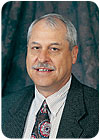
Blacksmiths. Milkmen. Gas station attendants. These are only a few examples of occupations once integral to everyday life but that exist no longer or only in truncated fashion. Some people say that’s the fate of the outside salespeople working for today’s PHCP distributors.
It’s too simplistic to say their jobs will disappear. Most distributors continue to employ an outside sales force and will for the foreseeable future. The key issue is whether their roles are changing with the times, or whether they continue to operate like they did in the 20th century, filling their days with a lot of “courtesy calls” on customers who no longer have the time to indulge in chit-chat.
Drop-in sales calls cost too much for distributors, and increasingly are seen by customers as a waste of time. Key information can be obtained and routine orders handled more efficiently with a phone call, fax or e-mail to a distributor’s inside sales staff. Top-notch salespeople increasingly need to channel their talents into troubleshooting and business development to serve the changing needs of both customers and their employers.
Adam Fein of Pembroke Consulting identified “customer self-service” as one of the major distribution trends in his “Facing the Forces of Change” book authored for the National Association of Wholesaler-Distributors. He notes that distributor customers increasingly want to save time via e-mail and accessing information online rather than in face-to-face encounters with a sales rep.
Consultant Scott Benfield has calculated the long-term cost for a distributor to maintain an e-commerce presence to be between .1% to .3% of sales (note the decimal points). This compares to an inside and outside sales presence of 7% to 9% of revenues. These differences compute to thousands of percent.
Benfield’s numbers coincide with data mined by ASA’s annual Operating Performance Report, which typically shows selling expenses as ranging between 6% and 9% of sales for member firms - tending towards the lower end for plumbing suppliers, higher for PVF and HVAC distributors. That’s $60,000 to $90,000 wrapped up in the selling function for every million dollars in revenue. Under relentless pressure to reduce transactional costs, distributors can’t help but zero in on this large expenditure.
Some skeptics will howl, “Let the competition cut their sales force. That plays right into our advantage in delivering personal service.”
They may be right. It can be a wise business strategy to go against the grain. If everyone else is cutting back, boosting one’s outside sales effort could be the way to go. Some customers will never turn their back on the good buddies who call on them, even if it costs a little more to do business with them.
But these are exceptions rather than the rule. Traditional ways of doing business are bending past the breaking point from hurricane-force winds of change.
Remember how annoyed all of us were with automated phone systems 10 years ago? Haven’t most of us pretty much made peace with the fact that this is how the business world operates? So it is with the transition from face-to-face encounters to phone and e-mail communication. Some field visits will always be necessary, of course. But they will be reserved for key negotiations, troubleshooting and other critical situations. Outside salespeople will not disappear, but they are likely to become fewer in number and with elevated business development skills.
Order taking must give way to drumming up new business. This means bringing in new customers and revenue streams, and figuring out ways to extract more market share from existing customers. Prospecting has always been among the duties of an outside sales rep, but traditionally it’s been something done to fill time between those courtesy calls on regular customers. In today’s world, it needs to be a focal point of sales effort. A half hour of research on the Internet is likely to turn up more hot prospects than a day spent burning a tank of gas on cold calls.
The business development process may also translate to more contacts with specifiers and end users. Manufacturers reps have seen their business evolve in this direction over the years. Most tell me they don’t spend nearly as much time in supply houses as they did years ago, but a lot more with downstream influences. Wholesaler salespeople may need to spend more time with their customers’ customers as well.
The good news for sales reps is that their talents will always be in demand. It’s just a question of channeling them in productive directions.
